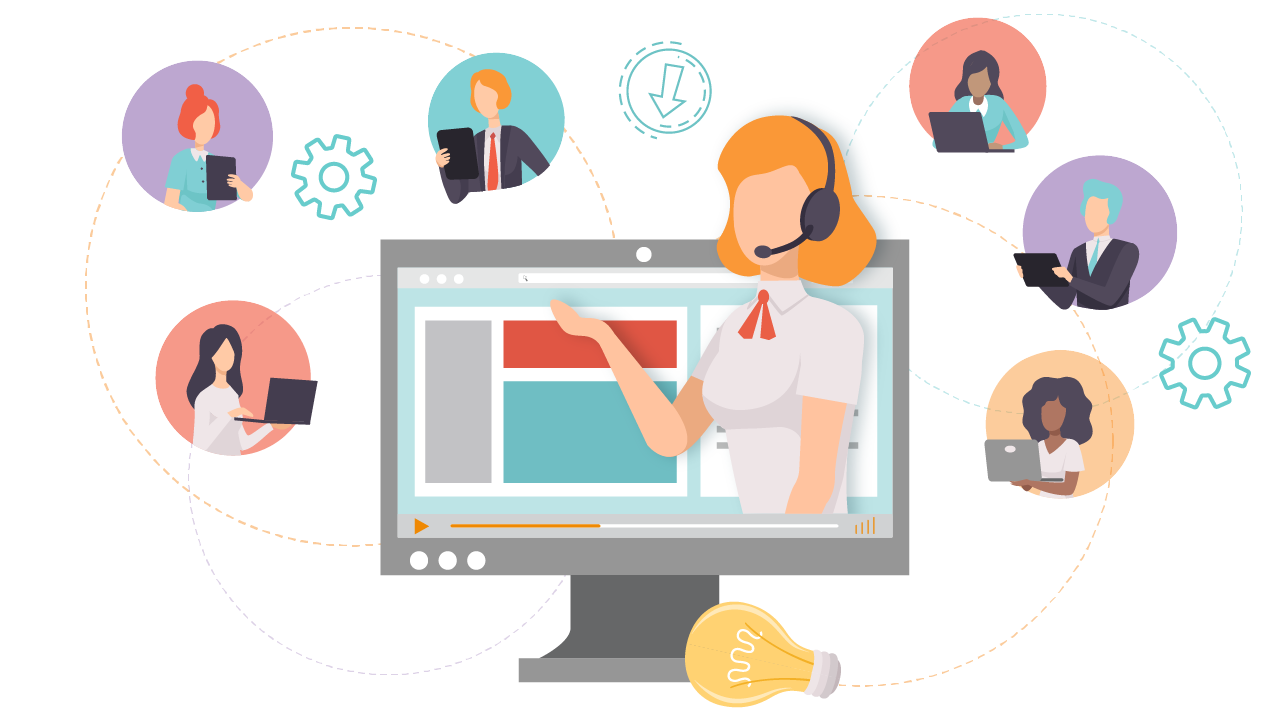Learning should always be fun so that the knowledge and expertise learned can be retained for longer and better. This demands a learning management system (LMS) that delivers responsive, intuitive, and interactive learning to learners across industries. Everyone has a different learning pattern – some learn through reading and fast essay writing while some learn through practical and interactive experiences. It’s true that learning experiences are enhanced when they are interactive, engaging, relevant, and use diverse media in the learning content. An LMS meets all these learning needs in the right proportion.

What is Interactive Learning?
Online interactive learning is where learners learn together, exchange knowledge and expertise while influencing each other. Moreover, learners communicate, interact, and collaborate with peers and instructors. Mobile devices play a key role in offering responsive learning in organizations.
Popular Interactive Learning Tools
Interactive learning can be implemented in an organization to enhance the learning offerings and ensure employees’ professional development and career growth. The most popular interactive learning activities include:
- Surveys
- Polls
- Questionnaires
- Communities
- Chats
- Text Messages
- Discussion Forums
- Social Media
- Live Interactive Video Sessions
- Blogs
- Newsletters
- Emailers
Immersive Learning
Immersive learning enables learners to apply what they’ve learned in real-time. Showcasing a real-time business or operational problem live or recording the session helps. Watching this video, learners can understand how the issue got resolved, in a step-by-step manner. This helps buyers and business analysts to make the right decisions.
Self-directed Learning
Self-directed interactive learning allows learners to select course and learning material, subject, pace, and time to learn on their own. Learners are in control of the learning content they consume. Learning experience platforms (LXPs) are the perfect examples of this kind of learning. Learners can pick learning paths depending on their learning abilities, job role, interests, and desired skills.
How Interactive Learning Reaches a Broader Audience
An interactive learning platform like an LMS has the following features to drive audiences
- Increases employee learning engagement
- Enhances employee retention
- Improves employee productivity
- Bridges skill gaps
- Gamification encourages more participation to earn badges, certificates, leaderboards, etc. while learning
- AI-technology suggests learning paths according to roles, learning interests, or learning history boost learning engagement and interest
- An interactive LMS has eCommerce capabilities to purchase learning courses, content, merchandise, etc. easily right within the LMS
- Learning experience platform (LXP) benefits offering more power to learners
- Social and collaborative learning for peer-to-peer and learner-instructor communication
- Reporting and analytics to gauge learning content as well as employee performance to enhance the future learning experience using meaningful insights
If you are keen on improving your audience base with a highly interactive learning platform then pick MapleLMS without any doubt. The LMS has all the above-mentioned features plus white-labeling, non-dues revenue for associations, Salesforce out-of-the-box integration with Single Sign-On (SSO), and a lot more. Visit MapleLMS to explore more!
Demo
Tags

